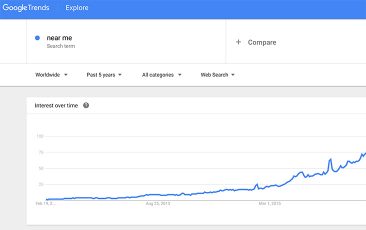Spanish, English, French are all languages you may know (or at least know of). But have you ever heard of Schema? It is the language Search Engines speak. Schema uses Structured Data to communicate with Search Engines.
To begin, we need to define structure data:
Structure data is data pushed to the internet that can be universally understood by search bots
In plain English this just means that if Google is looking for City or State to be in a certain place, that the website displays it in the code in that specific place so Google does not have to go looking for it. Structured Data enables the bots to more easily understand what the website is about, the elements it contains, and allows the bots to return more accurate and useful information about the website to users.
This language, Schema, produces code that is then embedded into your website that can easily define different elements - data, images, hours of operation, reviews, location, and more. An example of this is:

As you can see, it is fairly legible to the layperson.
With the implementation of ‘Google Cards, as seen below, it is extremely important to directly convey to Google what you want to be displayed on your card. Schema helps this.

Schema can increase Click Through Rates and display pertinent information for searches. In spite of this, very few webmasters implement this properly. Searchmetrics says that only 0.3% of web properties use Schema.org markup on thier websites.
Taking into account the benefits mentioned above, it would only make sense to implement schema onto your site right? With not too much effort we can get your site markedup and on the way to ranking better in a search.
If you are new to schema, do not fret. We will walk through step-by-step on how to implement the markup on your website.
So How does it work?
Schema marks up the individual elements of web pages; it can be used on anything from photos to names, this code will dictate to the bots exactly what the image or property is in a way that the bots can easily understand. To see a full list of markup you can implement into your webpage click here. This list is always growing as more and more web properties and developers expand.
So now we know that marking up your website with structure data means that a search engine can ‘read’ them better and understand exactly what the content refers to. Google’s ‘rich snippets’ and other types of rich data is all made possible by generating and implementing schema on your web property. Let's take a look at an example:

As you can see above one listing is much more attractive that the other. The one with ratings and reviews displayed. The addition of that content makes it more ‘clickable’ than the other listing.
In addition to the higher Click Through Rate the ‘rich snippet’ produces, it is said that pages that are marked up possibly produce high rankings by as much as four positions. Webmasters that are using schema.org tend to be one step ahead of the rest.
Let’s generate some code!
So for the purpose of ‘local business’ we will use one of three types of schema markup, JSON_LD.
1st - visit this website
2nd - Choose a business type
3rd - Fill out the info as seen below

4th - Enter you hours of operation

5th - Select the generate code option. This feature will churn out the code you see on the right of the image below.

Now that your code has been generated, you'll need to add this code snippet above the </head> tag on the page you would like to implement the markup.
If you have any questions or need any help implementing these properties to your website hit us up anytime!
To stay up to date on all our blog postings follow our Facebook page by clicking here!


